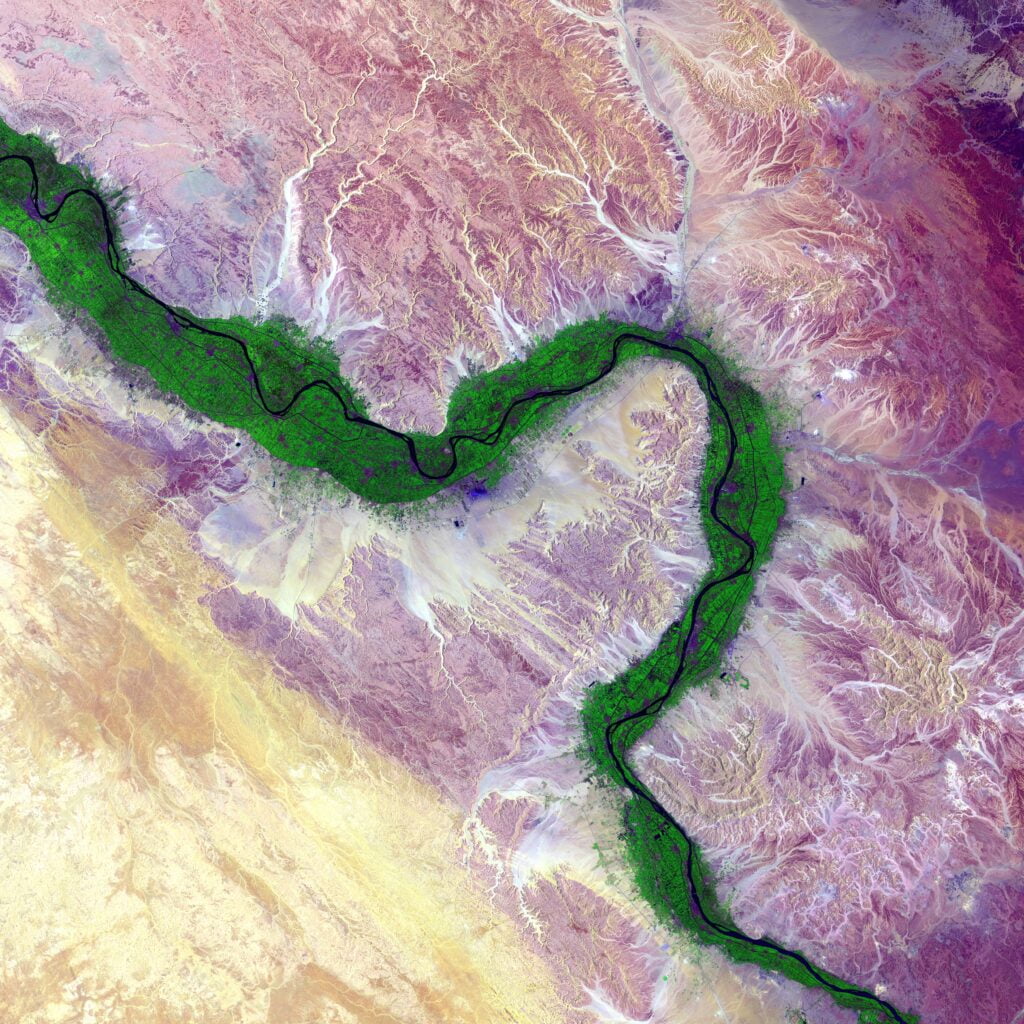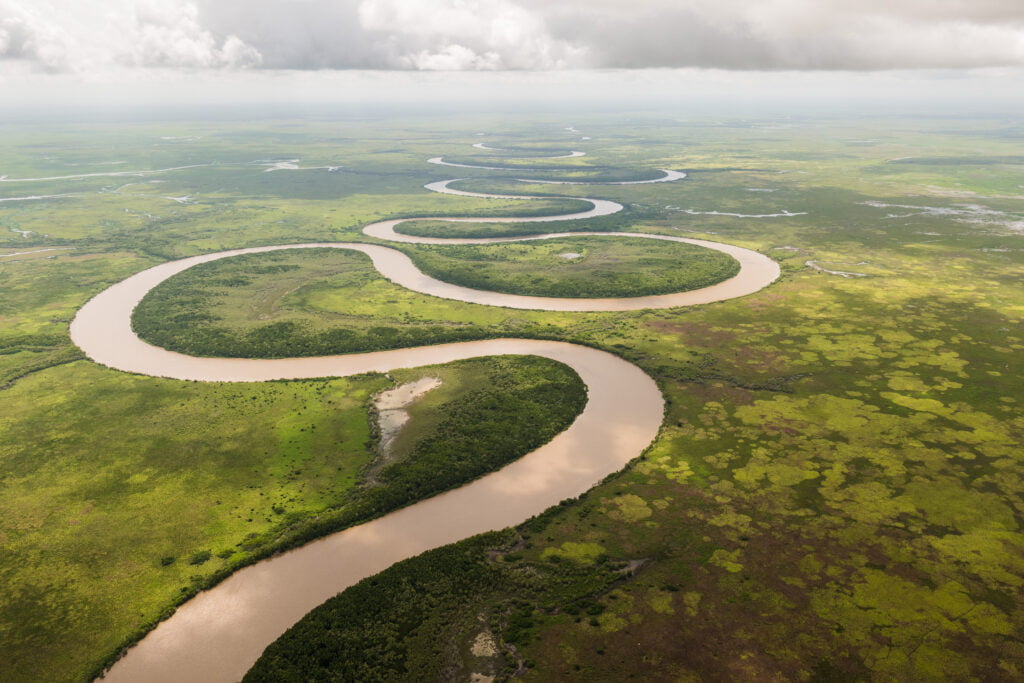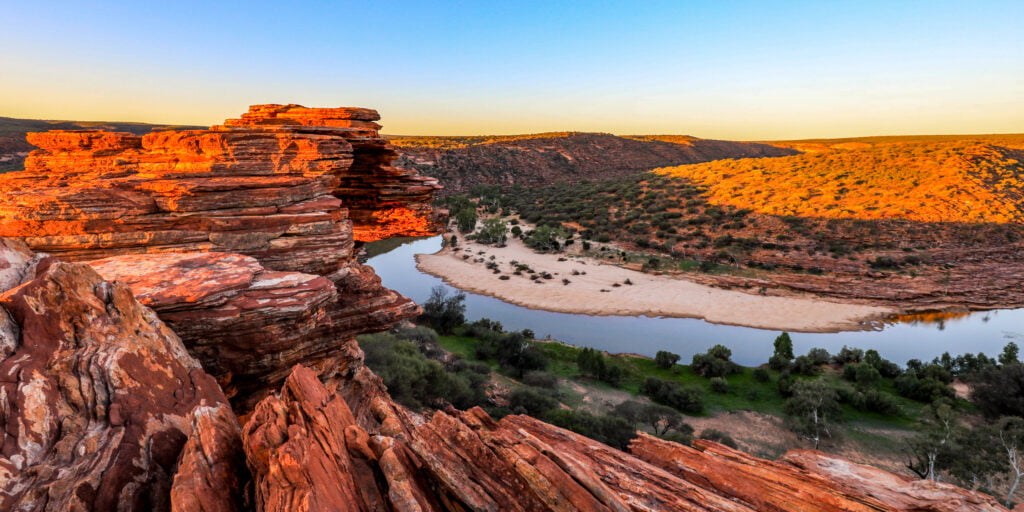Understanding our connection with rivers and waterways
By Rosanna Shamshudin
Have you ever stopped by the bank of a river, closed your eyes, and just listened? Maybe you’ve sat down at sunrise waiting for a glimpse of a platypus or rakali? Perhaps you’ve just sat underneath the riverside trees and had a picnic with a friend. If so, you’ve probably felt a connection to your surroundings, some inspiration or recognition of the importance of the world around you. If so, you wouldn’t be alone. There’s something about waterways that draws humans in and connects with us in a way we might not entirely understand. From the Murray-Darling Basin to the Tigris-Euphrates system, humans and society have been shaped by the rivers that wind through it and our physical connection to them is undeniable.

The Nile River, one of the most famous in the world. Green farmland marks a distinct boundary between the Nile floodplain and the surrounding harsh desert. Photo by USGS on Unsplash.
Take a moment to consider your relationship with the ecosystems around and within you. It takes an entire system of sunlight, water, fertile soil, pollinators and microorganisms to create the food we eat. It then takes a digestive system of microorganisms to break that down within your body.
For the average person, nature feels further and further away. Increasingly, it is seen as “out there” and apart from human civilisation and culture. Popular media, like Planet Earth, Alone Australia and Yellowjackets, portray the wild as primitive and ‘other’; something entered into instead of something to which we are intrinsically connected. Indeed, studies have shown that human health is indelibly connected to nature and that being surrounded by green space has significant positive effects on a person’s mental health and wellbeing, lowering stress, anxiety and depression levels.
The moments that humans began to feel disentangled from nature are unclear. Some scholars trace Western civilisation’s ‘break’ with the rise of Abrahamic faiths, which replaced many pagan religions that emphasised deep connection to the natural world. Other civilisations, such as some First Nations groups in Australia and North America, feel there never was a break and they are still bound to nature through different forms of kinship.

The Adelaide River in Australia’s Northern Territory, in the wet season.
Regardless of our interdependence, in Australia we have generally positioned ourselves as independent observers of nature. We study it; monitoring chemical levels, recording the diversity of flora and fauna, observing the impacts of each organism’s collision with another. In doing this, we forget that we are a part of nature itself and that every project we implement is another collision. When we acknowledge the connection we have, and the role we play in our environment, we can design effective, sustainable programmes that bolster the resilience of our waterways.
“As individuals, we hold opinions and biases that are related to our upbringing, beliefs, experiences and environment. These… affect how we make sense of the world around us and how we act in day-to-day life… Positionality is a tool that can help us think about this phenomenon, crucially it is a way to ‘own’ our personal perspectives…”
Similarly, we must acknowledge and critically consider our positionality to our waterways when designing and implementing waterway management.
Critical questions arise: How are we connecting with the river systems in our work and what aspects of nature do we value? What aspects do we take for granted? How do we empathise with the systems, and how should we? And how do we understand that whatever it is that we personally value, our connection to those spaces is not the only one?
Every aspect is intrinsically connected — as humans we regulate natural river flows for industrial and personal water supply and power generation, which then affects the flow needed for downstream flora and fauna. For instance, studies have shown that platypus wellbeing is reflected in flow quality and quantity. Fauna like the platypus have an important role to play in the health of a waterway system, as a control for macroinvertebrate populations and food source for native wildlife. Without them, we degrade the river system and sever our own connection to the land. Even more directly, their milk and venom are thought to be able to provide antibacterial and anti-diabetic health resources, that may one day become available to humans. In short, these management decisions affect the environment and subsequently us; emotionally, physically, and globally.

Kalbarri National Park, WA.
Answering these questions defines our connection toward our natural resources and inspires our compassion for them. Those with that compassion are more likely to commit to maintaining its welfare.
At the Australian River Restoration Centre, we ask ourselves these questions and believe that river restoration is as much a social, as an environmental issue. If we fail to recognise the value of people and just focus on ‘fixing’ a problem with technical solutions, we will ultimately fail in our river restoration efforts.
We work with local communities and landholders to define and build their social and environmental connections to support river restoration projects based on sound science. Some of these projects are about removing weeds, others include adventurous volunteers paddling through river corridors. Each is catered to the connections and capability people have with the riparian systems around them so they can develop the intrinsic connections we all have with our surroundings. You can learn more about our on-ground projects below.
The next time you visit your local river, have a look around. Close your eyes and embrace whatever you feel. When you understand your connection, you can do great things to improve the world around you.
In today’s episode, Siwan talks with Richard Swain, a Dabee man of the Wiradjuri nation and a river adventure guide (Alpine River Adventures) in the Snowy Mountains, in Kozciuszko National Park. Richard grew up learning the history of the Australian landscape from his father, and his grandfather taught him how Aboriginal peoples moved through and respected country. Richard has a long history of volunteering on local environmental and community projects and has a first-hand understanding of the huge impact feral animals have on Australia’s natural environment. Richard is an ambassador for the Invasive Species Council, helping to raise the profile of the role of Indigenous peoples in caring for Country and protecting it from invasive species. His life is now dedicated to protecting the environment from the impacts of modern society.
This conversation covers a wide range of topics, ranging from Richard’s experience with advocacy, the problem with the culture of modern Australia, and how indigenous and non-indigenous Australians can move forward together towards a lore of restoration — as Richard puts it, “Country is crying out for good people”. It’s a hard-hitting conversation at points, but one which provokes us and challenges us to improve, for the sake of Country and for ourselves.
Content Warning: This conversation includes a description of a massacre of Aboriginal people from 17:00 – 17:26 that may be of concern for some listeners.